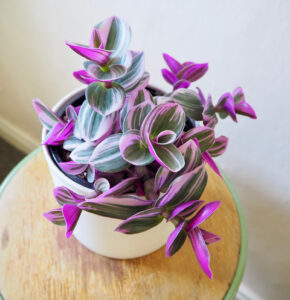Strawberry ‘Eversweet’ is a day-neutral, everbearing variety that produces sweet, aromatic berries throughout the season. Unlike June-bearing varieties that produce a single crop in early summer, Eversweet strawberries yield fruit in two or more cycles — typically from late spring to fall, making them perfect for those who want a longer harvest.
1. Overview and Characteristics
Eversweet strawberries are a cultivar of Fragaria × ananassa and are known for their:
- Small to medium-sized fruit with a sweet flavor
- Bright red color
- High yields across multiple harvests, often from late spring to fall
- Compact growth habit, making them suitable for containers, hanging baskets, or small garden spaces
The plant grows 12 to 18 inches tall and spreads about 18 inches wide, with dark green leaves and white flowers. The everbearing nature means that you’ll get multiple harvests each season, which makes it a great choice for extended fruiting in smaller or home gardens.
2. Planting ‘Eversweet’ Strawberries
Strawberries require specific conditions to grow well. Here’s how to plant Eversweet strawberries for the best results:
When to Plant
- Spring is the ideal time to plant strawberries, after the last frost date. However, if you live in a warm climate (USDA zones 5-8), you can plant in the fall as well.
- Container planting can be done at any time, provided the conditions are warm enough for fruiting.
Choosing a Location
- Full sun: Select a sunny spot that receives at least 6–8 hours of sunlight per day. Strawberry plants need plenty of sun to produce sweet fruit.
- Well-draining soil: Strawberries do not like soggy roots, so plant them in well-draining, loamy soil. Sandy loam with plenty of organic matter is ideal.
- Soil pH: Strawberries prefer slightly acidic soil with a pH between 5.5 and 6.5.
How to Plant
- Prepare the soil: Incorporate compost or aged manure to enrich the soil.
- Spacing: Space each plant about 12–18 inches apart, leaving enough room for the runners (side shoots) to spread.
- Planting depth: Ensure that the crown (the part where the leaves meet the roots) is level with the soil surface. Planting too deep or too shallow can affect plant growth.
- Watering: After planting, water thoroughly to settle the soil around the roots.
3. Care and Maintenance
Proper care will help you achieve a bumper crop of Eversweet strawberries year after year.
Watering Needs
- Strawberries prefer consistent moisture, but not soggy soil. Water deeply at the base of the plant, keeping the leaves dry to avoid fungal diseases.
- During dry spells, aim for 1–2 inches of water per week. In containers, you may need to water more frequently.
Fertilization
- In spring, before growth begins, apply a balanced slow-release fertilizer or organic compost.
- Once the plants begin to fruit, apply a liquid fertilizer high in potassium and phosphorus (such as a 10-20-10 formula) to promote strong fruiting.
- Avoid high-nitrogen fertilizers, as they encourage excessive leafy growth at the expense of fruit production.
Mulching
- Apply a layer of mulch, such as straw or shredded leaves, around the plants to help conserve moisture, suppress weeds, and prevent soil splashing (which can introduce diseases).
- Mulch also helps to keep the fruit clean by preventing direct contact with the soil.
Pruning
- Remove dead or damaged leaves to encourage airflow and prevent disease.
- Pinch off flower buds during the first few months of growth (if you’re planting bare-root strawberries) to allow the plant to establish a healthy root system before fruiting begins.
- After the first harvest, remove any dead or diseased leaves, and trim back older leaves to encourage new growth.
4. Harvesting Eversweet Strawberries
Eversweet strawberries will produce fruit in multiple cycles. You can expect harvests starting in late spring and continuing through fall.
How to Harvest
- Pick fruit when it is fully red. Strawberries do not ripen off the plant, so make sure to harvest them when they are fully colored.
- Gently pull or cut the berries from the stem with a small amount of the stem still attached.
- Harvest every few days during peak production for the best flavor and to avoid overripening.
Post-Harvest Care
- After each harvest, continue to care for the plant with consistent watering and fertilizing to encourage the next round of fruit.
- Remove any leaves or flowers that appear diseased or damaged to ensure the plant’s energy is focused on healthy growth and fruiting.
5. Overwintering Eversweet Strawberries
Since Eversweet strawberries are hardy in USDA zones 5–8, they can survive cold winters if properly cared for. However, for extra protection, especially in colder regions:
- Mulch around the base of the plants with straw or leaves to provide insulation.
- In pots, bring the containers indoors to a cool, unheated garage or basement to protect them from frost.
- Water sparingly during winter dormancy, ensuring the soil does not dry out completely.
In warmer climates, you can leave the plants outside and expect them to survive the winter with minimal protection.
6. Common Issues and Pests
Strawberries, including the Eversweet variety, can be susceptible to several pests and diseases. Here’s how to manage common problems:
Pests:
- Slugs and Snails: These pests can chew holes in the leaves and fruit. Handpick or use traps, and consider using organic slug bait.
- Aphids: These small insects can deform the leaves and reduce plant vigor. Use insecticidal soap or neem oil to control aphid infestations.
- Birds: Birds love ripe strawberries! Cover your plants with bird netting to protect the fruit.
Diseases:
- Powdery mildew: Fungal disease causing white, powdery spots on leaves. Improve air circulation and avoid overhead watering.
- Gray mold (Botrytis): Caused by excess moisture and poor air circulation, this mold can affect fruit and leaves. Remove infected plants and improve drainage.
To prevent disease, practice good crop rotation and avoid watering the leaves.
7. Container Growing Tips
If you are growing Eversweet strawberries in containers, follow these tips for success:
- Use 12–16-inch pots with good drainage.
- Choose a high-quality potting mix rich in organic matter.
- Water more frequently in containers, as the soil can dry out faster than in-ground plants.
- Place the container in a sunny location and ensure it stays protected from harsh winds.
Conclusion
The Eversweet strawberry is a fantastic choice for gardeners seeking a productive and flavorful strawberry variety. With its everbearing nature, you’ll enjoy fresh strawberries from late spring to fall, making it a great addition to any garden or patio. By providing the right conditions, consistent care, and timely harvesting, you can enjoy a bounty of delicious fruit year after year.


